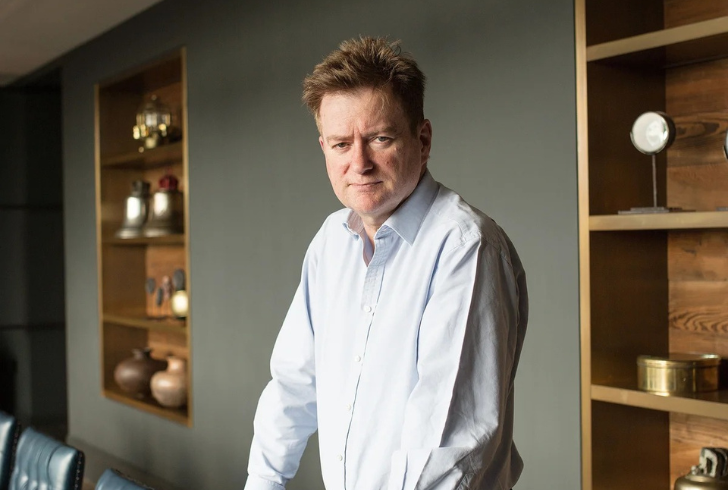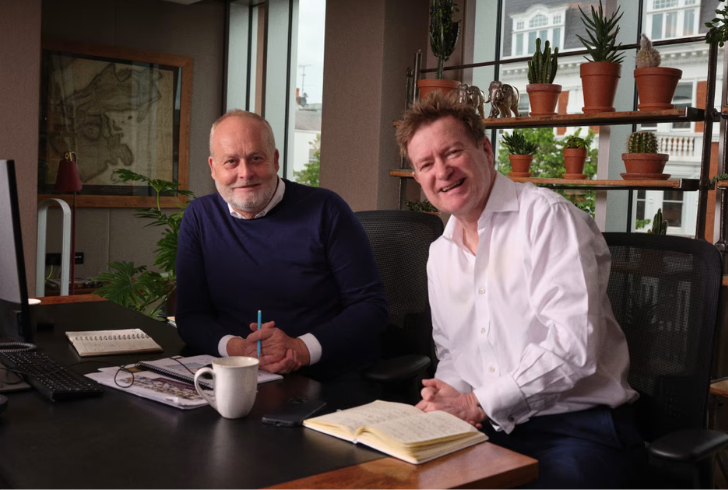The Odd Duo Behind One of the World’s Most Successful Hedge Funds
London’s hedge fund scene has its fair share of legends—but few stories are as unique or impactful as that of Paul Marshall and Ian Wace. Their firm, Marshall Wace, has redefined what it means to outperform, not just with sharp instincts but with a data-driven strategy that leaves rivals struggling to catch up.
At the heart of it? A bold and unusual algorithm that turns thousands of tips from across Wall Street into powerful trades.
The Unlikely Duo Behind the Billions
It’s hard to find two people more different than Paul Marshall and Ian Wace. Marshall, Oxford-educated and calm under pressure, runs the firm’s traditional investing side. Wace, a former soldier with no college degree, brings intense energy to the trading floor. Their partnership began in the 1980s at S.G. Warburg and has endured for nearly 30 years—despite barely seeing eye to eye on most things.
“I don’t think I’ve agreed with Paul on anything—ever,” Wace admitted in an interview from their stylish London headquarters. Marshall, with a dry laugh, said Wace was probably joking. “We’ve definitely been to each other’s homes,” he added, “but yes, we are very, very different. That’s real.”
Yet this contrast is exactly what makes Marshall Wace tick.
The Strategy That Changed Everything

Instagram | @darkhorse_stocks | Despite their stark differences, Paul Marshall and Ian Wace built a lasting three-decade financial partnership.
What sets their firm apart isn’t just smart investing—it’s TOPS (Trade Optimized Portfolio System), an idea born from an offhand suggestion and built out by a summer intern. Wace proposed they track and rank stock tips coming in from banks and brokers. Marshall was skeptical. In his words, “People like me used to think the sell-side was beneath us.” But Wace saw potential.
That spreadsheet is now a data powerhouse. TOPS analyzes over 30 petabytes of data daily—including social media activity, satellite imagery, fund flows, and even traffic in parking lots. More than 1,000 contributors—from Goldman Sachs to boutique hedge funds—submit trade ideas into the system.
Each submission is ranked, tracked, and evaluated. The best ideas? They’re rewarded with a slice of millions in commissions.
But TOPS doesn’t just assess ideas—it monitors the behavior of contributors, too. It tracks patterns like what time of day good tips are submitted or whether someone consistently exits trades too soon. Underperformers are dropped. High scorers get detailed feedback and, sometimes, a big payday.
How Paul Marshall Built Beyond the Trading Floor
While Wace focuses on operations, Paul Marshall has expanded his influence far beyond finance. He’s a known supporter of classical liberal values—limited government, free markets, and open speech. He’s backed media platforms like UnHerd and GB News, and purchased The Spectator, a conservative-leaning magazine often dubbed the “Tory bible.”
Marshall has made headlines with sharp opinions—calling for a breakup of the BBC, which he described as “squatting like a giant toad in the UK’s media space.” He also co-founded the Alliance for Responsible Citizenship, known by some as a counterweight to globalist forums like Davos.
But not everything has been smooth. Last year, he came under fire for engaging with inflammatory content on social media. After criticism, Marshall apologized and removed the posts. Wace commented on the backlash, saying, “It’s painful to watch your partner go through something like that, but we kept moving forward.”
Numbers Don’t Lie
The firm’s success speaks volumes. Marshall Wace manages over $70 billion, and its primary algorithm-driven fund delivered a 22.7% return last year—outshining giants like Citadel and Point72. While markets flailed during early 2023 volatility, the same fund was already up 7.1% by April. Compare that to the S&P 500’s 5.3% drop, and the edge becomes clear.
Even the firm’s setup tells a story. With just 750 employees, they’re leaner than Citadel’s 3,000 or Man Group’s 1,800. Yet their system, their people, and their discipline keep them out front.
Origins of a Billion-Dollar Concept

wsj.com | Marshall Wace built their unique system by rejecting Wall Street’s typical approach and continuously refining their ideas.
Marshall and Wace didn’t start big. In 1997, they pooled $50 million, partly from George Soros, to launch their first long-short equity fund, Eureka. Their current system grew from years of iterating on ideas and refusing to settle for Wall Street’s usual playbook.
What started with an intern and a spreadsheet is now a system that’s processed over four million trade ideas and drives more than $40 billion of assets. It’s one of the most refined and disciplined models in hedge fund history.
A Culture Built to Win
The firm’s culture is no accident. Wace personally designed their London office—modern chandeliers, reclaimed wood ceilings, walls lined with employee family photos. “We want people to feel comfortable,” he explained, “then we push them as hard as we can.”
Recruiting there isn’t typical either. Once, Wace challenged candidates to travel across Europe in 24 hours, as creatively and cheaply as possible. One crossed Poland using 30 different methods of transportation, while another stayed in London but visited dozens of foreign embassies. The point? To see how people think, adapt, and perform under pressure.
Other firms have tried to replicate their model—Citadel, Man Group, and Two Sigma among them—but none have matched its success. What keeps Paul Marshall and Ian Wace ahead is a mix of rigor, innovation, and their unique dynamic.
They may never be best friends. They may argue constantly. But that contrast is exactly what drives their success—and keeps Marshall Wace out in front of a crowded, competitive field.